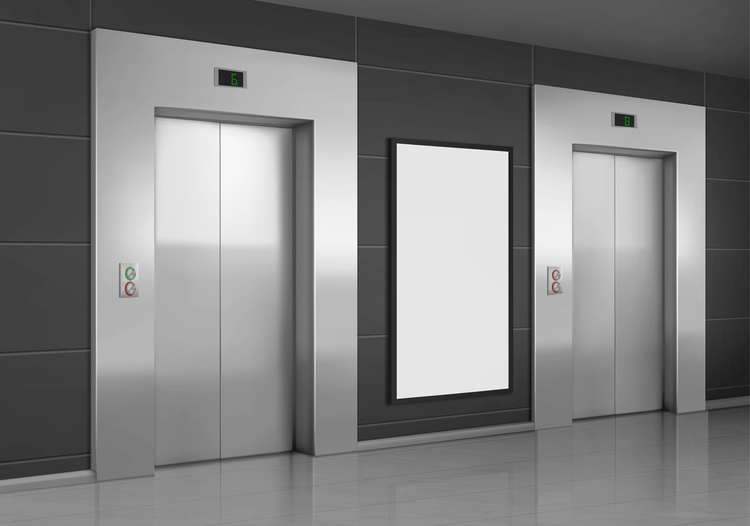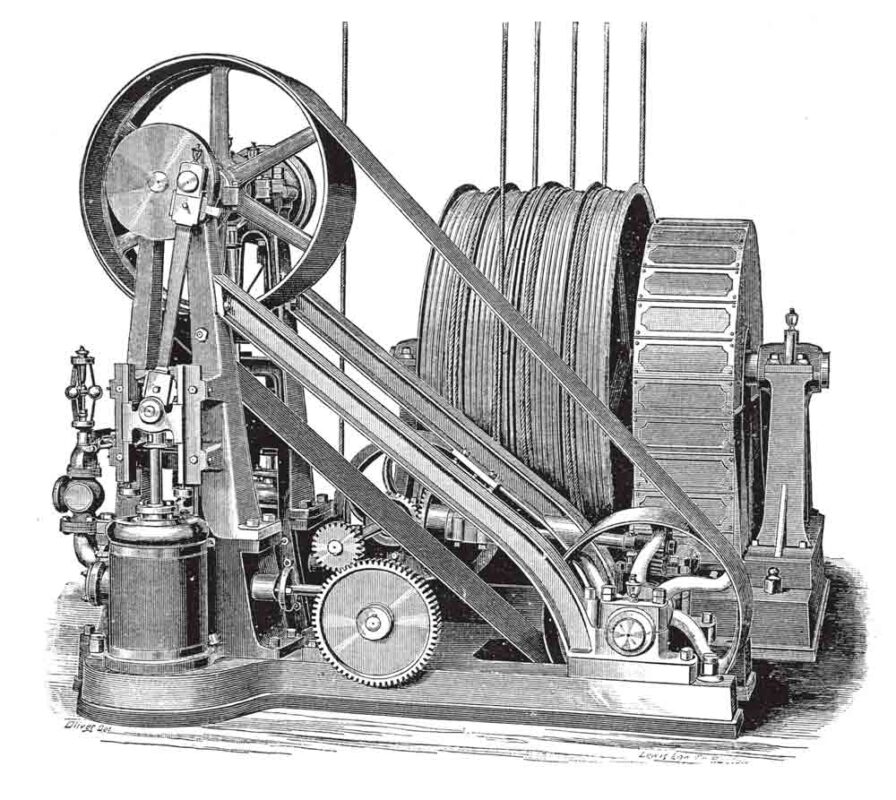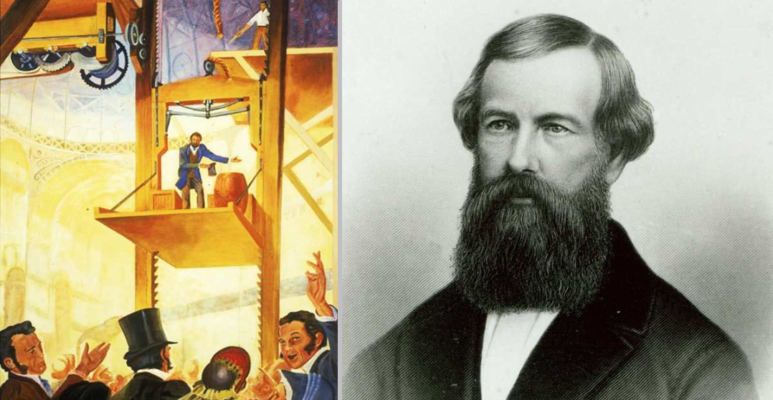
Have you ever wondered who invented the lift elevators and how they evolved into the essential vertical transportation systems we rely on today? The history of elevators is a fascinating journey that spans centuries, marked by innovation, engineering prowess, and the relentless pursuit of efficiency and safety. In this blog post, we will focus on the origins of elevators, tracing their development from ancient times to the modern marvels that define our urban landscapes.
Let’s uncover the inventors, visionaries, and milestones that have shaped elevators’ evolution, revolutionizing how we navigate buildings and cities. From ancient civilizations’ rudimentary lifting mechanisms to the groundbreaking inventions of the Industrial Revolution and beyond, the story of elevators is a testament to human ingenuity and the quest for vertical mobility. We will shed light on the origins of elevators and the remarkable individuals who paved the way for their transformation into indispensable urban infrastructure. So, let’s get started!
Early Vertical Transportation
In ancient civilizations, ingenious methods of vertical transportation emerged to meet the growing need for lifting heavy loads and materials. Among these early devices were simple hoists and pulleys, ingeniously crafted from basic materials like ropes, wood, and stones. These mechanisms, though rudimentary in design, played a pivotal role in shaping architectural endeavors, facilitating the construction of monumental structures such as temples, pyramids, and cathedrals.
Ancient Egyptians employed various lifting devices, including inclined planes and counterweighted systems, to transport massive stone blocks during the construction of the pyramids. Similarly, the Greeks utilized complex systems of pulleys and cranes to hoist building materials for their monumental architectural projects, showcasing remarkable engineering prowess and innovation.
During the Middle Ages, developing more sophisticated hoists and cranes enabled European builders to undertake ambitious construction projects, including the towering cathedrals and castles that defined the era. These lifting mechanisms, often operated by human or animal power, were instrumental in raising heavy materials to great heights, laying the groundwork for the vertical transportation systems that would emerge in subsequent centuries.
While early vertical transportation devices lacked the sophistication and efficiency of modern elevators, they represented significant technological advancements for their time. Their legacy lives on in the evolution of elevator technology, serving as a testament to human ingenuity and the enduring quest for efficient vertical mobility.
The Industrial Revolution and Steam-Powered Elevators

The Industrial Revolution, a period of profound technological advancement and economic growth, reshaped the landscape of urbanization and construction practices. With the rise of industrialization came a surge in demand for efficient vertical transportation solutions to support the burgeoning manufacturing and trade sectors. Steam-powered elevators emerged as a transformative innovation, revolutionizing the movement of goods and people within factories, warehouses, and commercial establishments.
Steam-powered elevators, powered by steam engines, provided a reliable and efficient means of transporting heavy loads vertically, enabling the rapid expansion of industries and the construction of taller buildings. The ability to move materials and equipment between different levels with ease facilitated mass production and distribution, driving economic growth and urban development.
The widespread adoption of steam-powered elevators profoundly impacted building design and urbanization, fueling the construction of taller structures and the densification of urban areas. With the newfound ability to reach greater heights, architects and engineers pushed the boundaries of construction, resulting in skyscrapers and high-rise buildings that transformed city skylines worldwide.
Who Invented the First Elevator?

The credit for inventing the first modern safety elevator is often attributed to Elisha Otis, an American inventor and entrepreneur. In 1852, Otis unveiled his groundbreaking invention at the Crystal Palace Exposition in New York City, showcasing a revolutionary safety mechanism that prevented elevators from free-falling in the event of a cable failure. Otis’s invention, which featured a spring-loaded device known as the “safety brake,” revolutionized the elevator industry, making vertical transportation safer, more reliable, and commercially viable.
Otis’s safety elevator paved the way for the construction of taller buildings and the widespread adoption of elevators in commercial and residential settings. The invention of the safety elevator transformed the elevator industry and catalyzed urbanization and the development of modern cities, enabling the construction of skyscrapers and high-rise buildings that define urban landscapes today.
Electric Elevators and Further Innovations
The late 19th century witnessed another leap forward in elevator technology with the introduction of electric elevators. Pioneered by inventors like Werner von Siemens, electric elevators utilized electric motors and cables to power the lifting mechanism, offering greater efficiency, reliability, and speed compared to steam-powered counterparts. Electric elevators quickly gained popularity for their superior performance and ease of operation, leading to their widespread adoption in buildings worldwide.
The advent of electric elevators revolutionized vertical transportation, enabling faster and smoother rides and greater flexibility in building design. Architects and developers could construct taller buildings with multiple floors with electric elevators, further reshaping urban skylines and architectural landscapes. Subsequent innovations, including hydraulic elevators and traction systems, continued to improve the performance and safety of elevator lifts for home and commercial space, ushering in a new era of vertical mobility that continues to evolve.
The Rise of Modern Home Lifts with Advanced Technology
In recent years, there has been a significant rise in the popularity of modern home lifts equipped with cutting-edge technology. These innovative elevators offer homeowners a convenient and stylish way to enhance mobility and accessibility within their residences. Unlike traditional lifts, modern home lifts are designed with sleek aesthetics, space-saving features, and advanced functionalities, making them a seamless addition to any home.
Adopting advanced technology has transformed the home lift industry, allowing for the development of compact, energy-efficient lifts that can be installed in various residential settings. From compact shaftless designs to eco-friendly drive systems, modern home lifts offer homeowners a range of options to suit their individual needs and preferences. With features like remote control operation, adjustable lighting, and customizable interiors, these lifts provide users with a luxurious and personalized experience.
How Modern Home Lifts Promote Independence?
Modern home lifts promote independence and accessibility for individuals with mobility challenges or disabilities. By providing a safe and convenient means of vertical transportation within the home, these lifts enable users to move freely between different levels without relying on stairs or assistance from others. This newfound independence empowers individuals to maintain mobility and autonomy, enhancing their quality of life and self-sufficiency.
Furthermore, modern home lifts are equipped with a range of features and technologies designed to enhance safety and comfort for users. From the smooth start and stop mechanisms to emergency stop buttons and battery backup systems, these lifts always prioritize user safety. Additionally, features like non-slip flooring, handrails, and spacious cabins ensure a comfortable and secure ride for users of all ages and abilities.
Step into Modern Living with SWIFT Lifts – Contact Us Today!
Experience the convenience, comfort, and luxury of modern living with SWIFT Pro and SWIFT Lite. Our state-of-the-art home lifts combine cutting-edge technology with sleek design to elevate your home’s accessibility and style. Whether you are looking to retrofit an existing home or incorporate a lift into your new construction project, SWIFT has the perfect solution for you.
Contact us today to learn more about our innovative home lift options and schedule a consultation with one of our experts. Step into modern living with SWIFT Lifts and discover the ultimate in convenience, comfort, and independence.
FAQs
The space required for installing a home elevator varies depending on the elevator’s size and type, but typically, a minimum space of about 1×1 meter is necessary for a small residential elevator.
Some home elevators are equipped with backup power systems, such as battery backup or generators, to ensure continued operation during power outages, providing added peace of mind for users. However, these battery backup systems only allow the lift to travel to the nearest floor with low speed. SWIFT is the first 100% battery driven home lift that in the event of power failure still can travel with full speed and operation, up and down multiple times.
Home elevators are designed to accommodate wheelchairs and other mobility devices, with spacious sizes and customizable features to meet the accessibility needs of users with varying mobility requirements.
Home elevators typically travel at speeds ranging 0,15 m/s to 0,3 m/s, providing a smooth and comfortable ride between floors within residential settings

